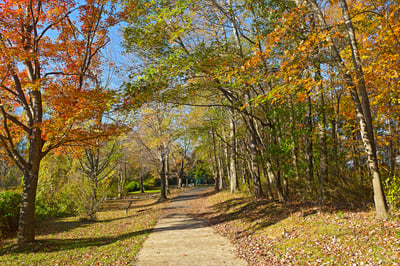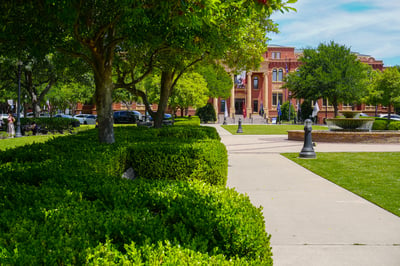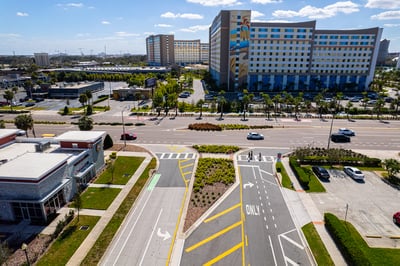When you look at a beautiful and thriving commercial landscape, you probably think about it in terms of its aesthetic appeal. It looks beautiful and for that reason, it boosts the property value, makes people feel welcome, attracts new business, and so much more.
But did you know that there are also environmental benefits to landscaping?
Too often, landscaping is discussed by under informed but well meaning people as if a managed commercial landscape is somehow a detriment to the environment. But too much of this information is misguided and lacking in scientific evidence. We find that there is a tremendous amount of misinformation out there about landscaping and the environment—and so we’d like to do our part to dispel some of the false information that we hear every day.
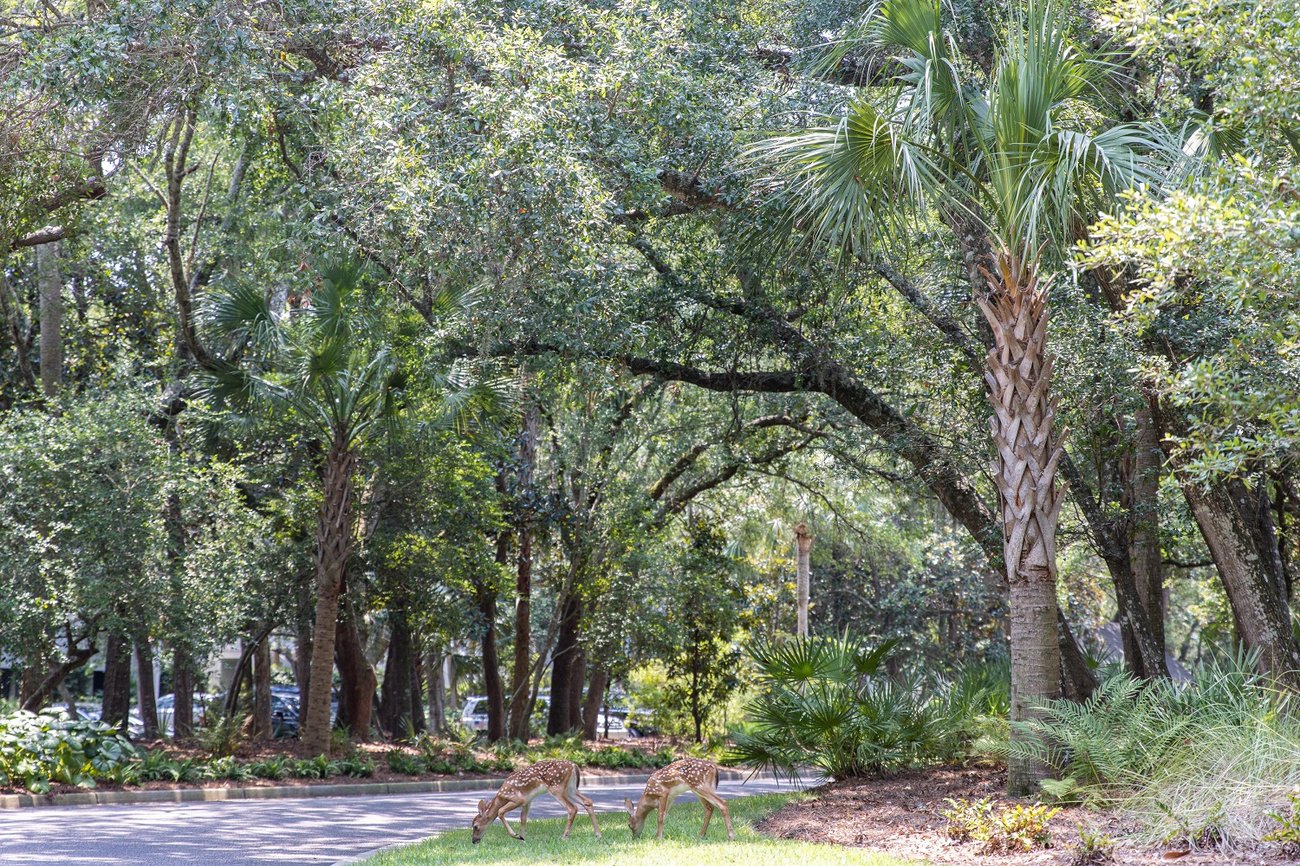
The truth is, most lawn and landscaping professionals got into this industry because of a love of green space, the environment, and “the land”. We truly desire to be good stewards of the environment and, borrowing a phrase that’s often used in our industry, to make the world a better place - one landscape at a time.
While there are some landscapers who might not put the industry’s best practices to use (which can create a bad name for the industry), the majority of qualified landscape professionals are truly doing good work and doing it in an environmentally responsible way.
Here are some ways that landscaping can contribute positively to our environment that you might not have been aware of. We think this is important information, so if you learn something here, then please share this link with your residents, tenants, visitors, or any others involved with your property.
1. Healthy Lawns and Landscapes Improve Air Quality
There has been some recent buzz around the idea of “getting rid of lawns,” but the truth is that lawns are quite environmentally friendly. Turfgrass, specifically, comes with some really important benefits that tend to get overlooked. A big one is its ability to improve air quality.
Natural lawns help to purify the air.
While trees often get all the credit for producing oxygen, lawns are important and effective in this process, too. Grass helps to produce the air that we breathe through the natural photosynthesis process, just like trees do.
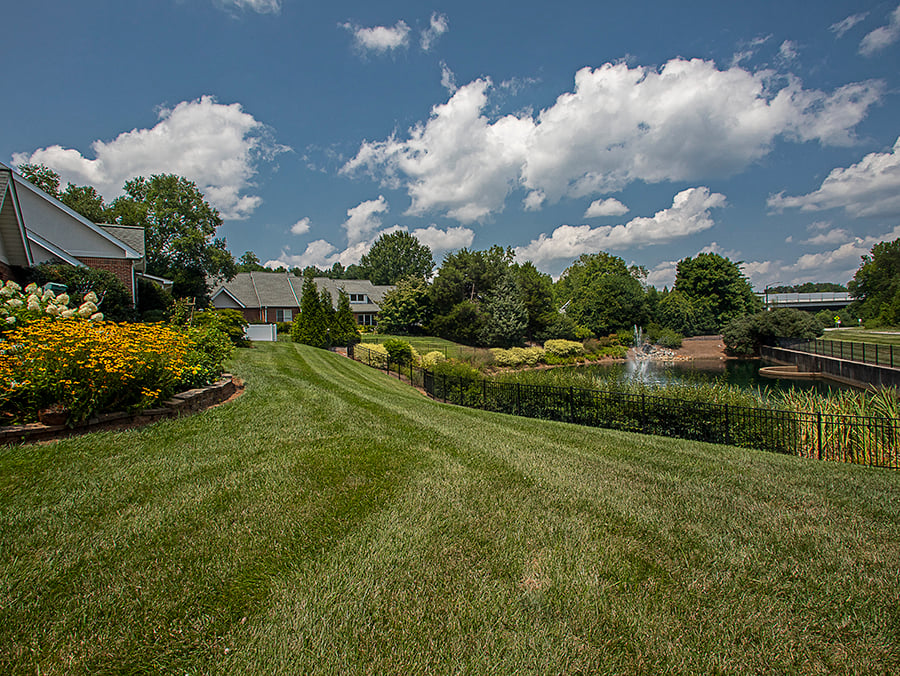
Plants (including turfgrass) are absolutely essential to the carbon sequestration process. They capture significant amounts of carbon from the air and release oxygen. On top of that, they also play a role in capturing particulates and other microscopic pollutants, making the air cleaner for us all.
In fact, the National Association of Landscape Professionals (NALP) has reported that a 5,000 square foot lawn can produce enough oxygen for 18 to 34 people daily. Meaning that lawns have always and will continue to play an important role in helping to fight climate change.
2. Healthy Lawns and Landscapes Regulate Temperature
Green space is also very important to help regulate the temperature of the surrounding environment.
Turfgrass has been found to be much cooler than asphalt or cement, helping to act as a natural “air conditioner” for the world around it. It has been found that lawns may be as much as 20 degrees cooler than surrounding hardscapes or asphalt.
Another advantage that grass has over pavement is that it doesn’t crack. Pavement expands and contracts as temperatures change, leading to cracks that become safety hazards. Replacing large paved areas with healthy turf reduces the amount of pavement that will need to be repaired or replaced, and better regulates temperature in the area.
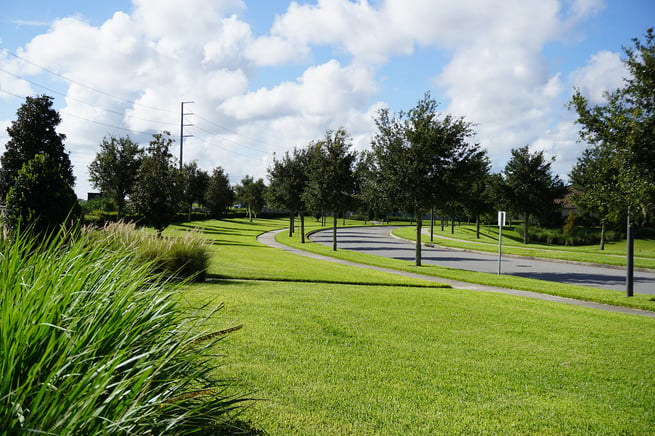
The landscape can play a big role in this, as well.
In many parts of the country, but particularly the South and the West where it gets extremely hot for long portions of the year, we’re always looking for ways to keep ourselves just a little cooler.
Whether adding more trees to create a natural canopy of shade or installing a hedgerow to block the setting sun from a westward facing window, landscapes can have a big impact on temperature regulation indoors, too. With more shade from trees, your home or office’s air conditioning system won’t have to work as hard to keep you cool, saving money on your electric bill.
3. Healthy Lawns and Landscapes Reduce Soil Erosion and Prevent Runoff
Soil erosion and potential wastewater runoff are two major concerns when thinking about how to make your property more environmentally friendly. And healthy lawns and landscapes can also play a positive role here.
In fact, a thick, thriving, and healthy lawn can prevent erosion by wind and water, help to improve flood control, and assist with the breakdown of organic matter. When a lawn is thick and healthy, rainwater seeps into it instead of running off of it.
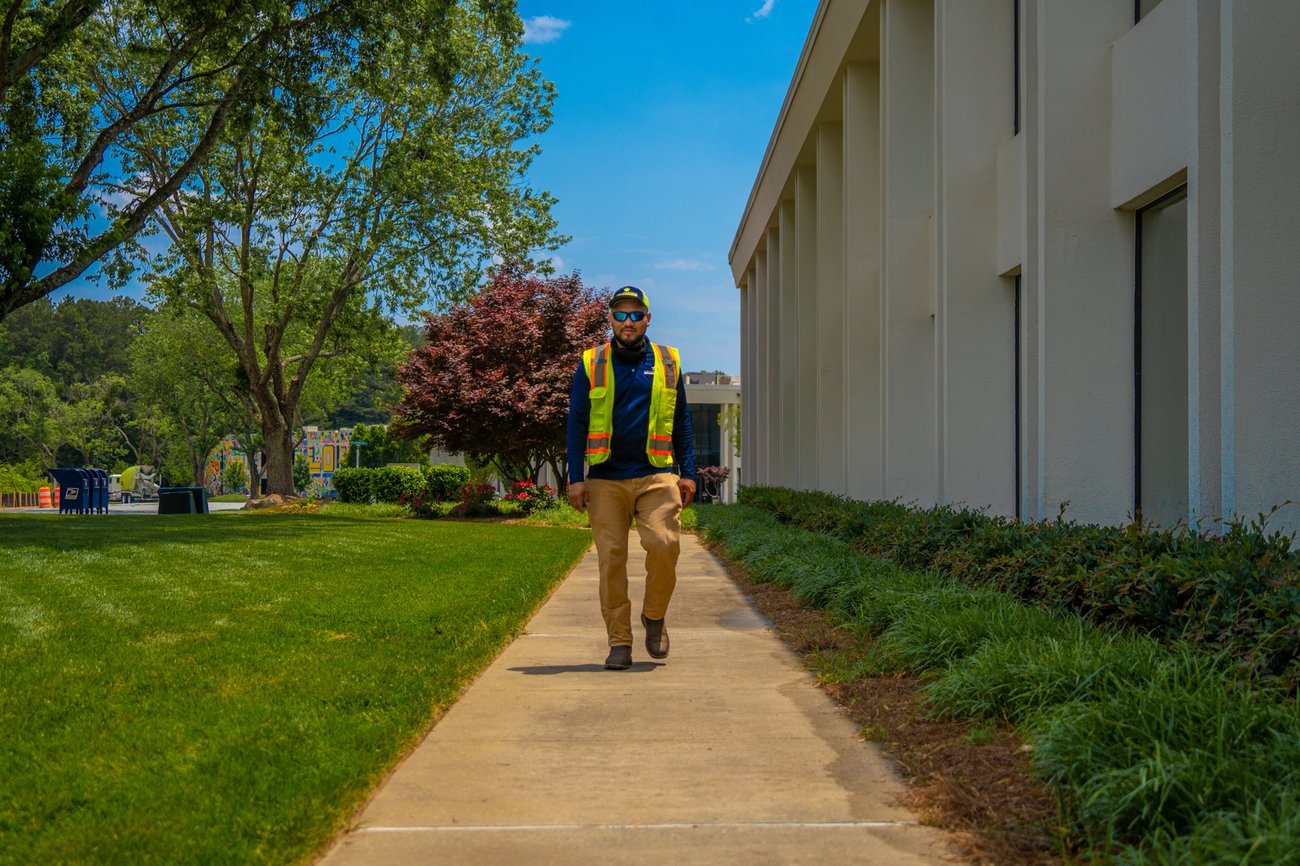
In addition, the root systems of plants can also have a positive benefit. They allow for 20 times greater water absorption than tilled soil. That also means that areas with healthy turf, trees, and plants are far less likely to experience flash flooding, or areas of standing water after hard rain.
This is important because soil erosion isn’t just an aesthetic issue. Areas of exposed dirt on a hillside indicates that the soil is weak. If not corrected, this can lead to mudslides after a sustained rainfall, which can be highly damaging and destructive to your commercial property.
Reducing soil erosion in these areas often involve decorative plantings of shrubs and other groundcovers, meeting both the functional and aesthetic needs of the property’s landscape.
4. Healthy Lawns and Landscapes Reduce Noise Pollution
Another highly valuable role of green space is its ability to reduce noise pollution. Lawns and landscapes can absorb and deflect sound, which is a big deal in not only urban environments but also in any busy area of a commercial property.
With these benefits in mind, modern urban developments are increasingly looking to commercial landscape designers and commercial landscape management companies to find new ways to bring nature back to the city. Turfgrass, plants, and trees are much better at absorbing sound than any type of pavement or concrete walls. Dampening even a small amount of the city’s noise makes the environment just a little more pleasant for its residents.
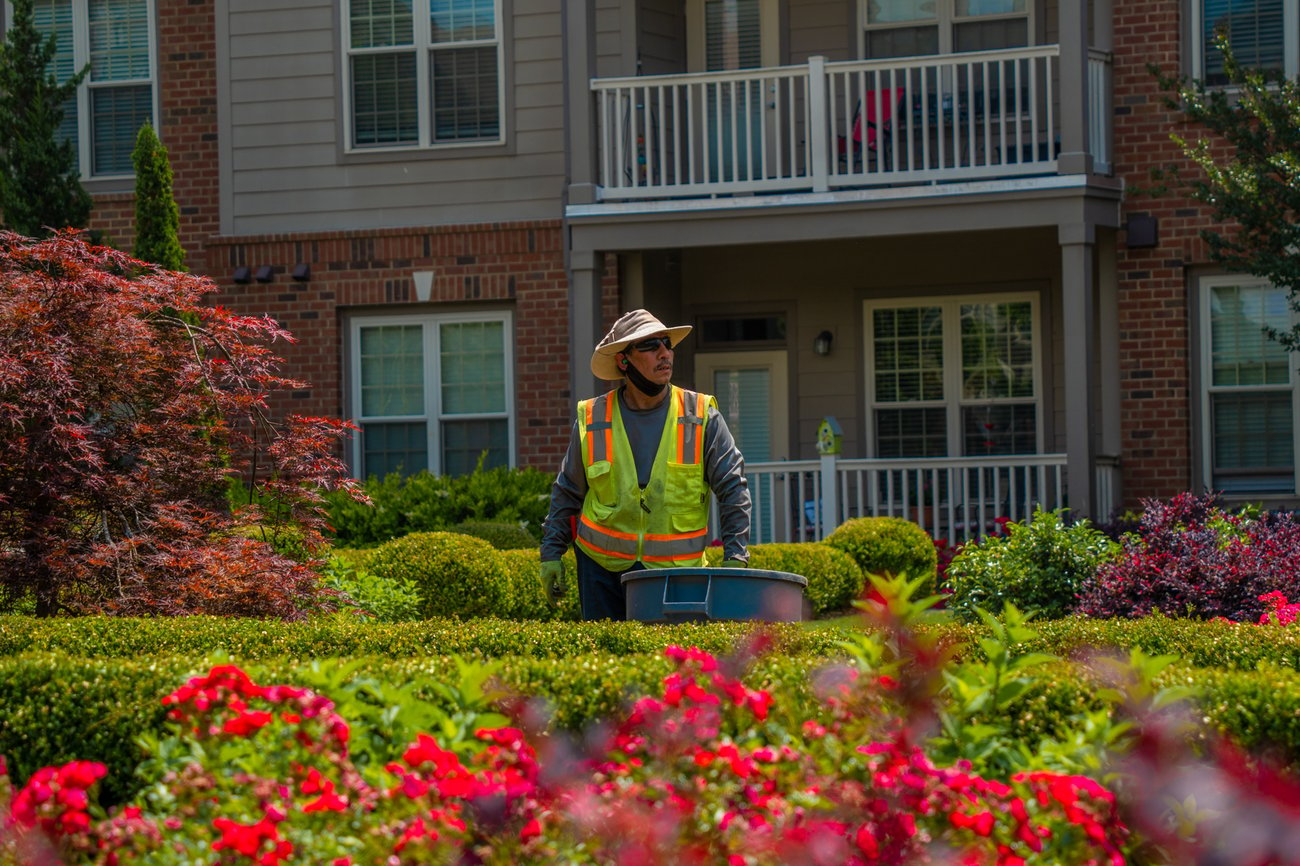
In addition to reducing noise pollution, lawns and landscapes can also reduce glare and light reflection, creating a safer environment by making it easier to see pedestrians and oncoming traffic for drivers.
And these are just some of the ways that green space makes a property a more comfortable place to spend time.
Making Environmentally Friendly Choices in Commercial Landscaping
In order to achieve these environmental benefits to landscaping, a landscaper must, of course, know how to make environmentally conscientious choices. There are best practices that we, and other responsible companies like ours, are taking to ensure that properties truly do get all of the environmental benefit they can from their landscaped spaces.
- The first of these principles sounds relatively simple - it’s planting the “right plant in the right place.” This is absolutely critical to getting the full benefit out of the plant and keeping it an environmentally conscious choice. Unfortunately, we too often find that even some supposed “pros” have made mistakes in plant placement. When a plant that needs full sun is planted in a shady spot—or vice versa—you’re just setting it up for trouble. It’s never going to perform optimally and will need continuing care to even survive.
- We are also taking steps to use native plant material whenever possible so that the landscape isn’t using more water than it should need. Landscaping with native plants can be a smart choice if you’re looking for a landscape that is both beautiful and eco-friendly. Native plants have already been part of the local region for hundreds or possibly even thousands of years. They’re already well-adapted to the local environmental conditions and don’t need excess amounts of water, special care, or nutrients to look and perform their best.
- We’re also helping to guide and educate our clients on making environmentally wise landscaping decisions that will not only put less stress on the environment but potentially save them money, too. Making changes to take advantage of new technology in smart irrigation and hiring a landscape provider that is well trained in these best practices can be environmentally friendly changes that make a huge difference for commercial properties.
We understand that commercial landscaping sometimes gets a bad rap when it comes to our impact on the environment. But there are so many companies that have made commitments and adopted practices to ensure that their landscaping work is having a positive impact on the environment.
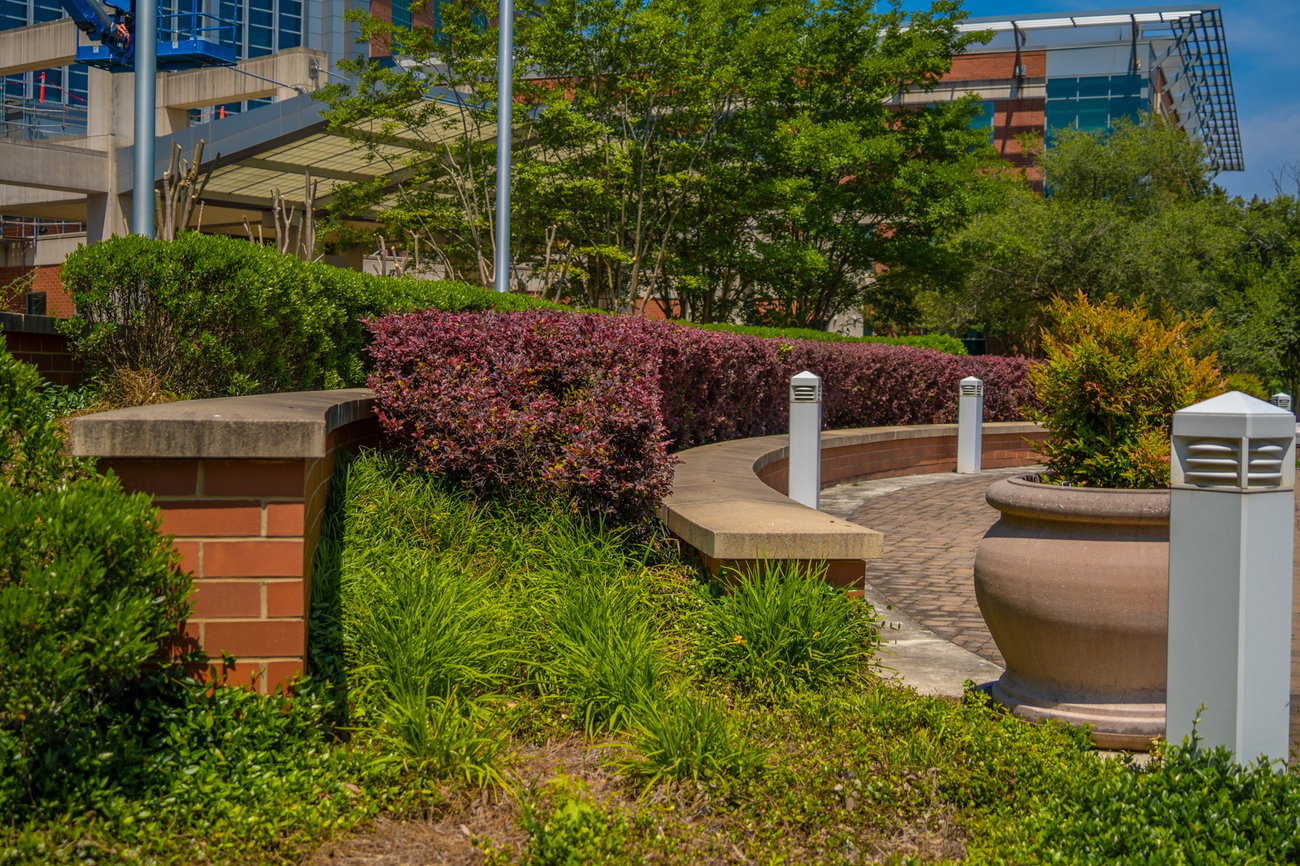
At Yellowstone Landscape, this is something that we care about deeply. Healthy lawns and landscapes are green spaces that have an impact on fighting climate change.
There is no question that the weather has become unpredictable and oftentimes extreme. The globe is warming up. But, green space can fight back against this! The trees, shrubs, and turf at your commercial property are making a difference. Make sure it continues to be well-cared for and healthy.
With the right partner in commercial landscaping, you can ensure you’re receiving all of the environmental benefits of landscaping. That should give you some peace of mind that you’re doing your part to help.
Are you ready to feel confident in making a wise choice among commercial landscape providers? Request a consultation today. We’ll meet to learn more about your property and its challenges, then create a comprehensive plan to take care of all of the details for you.


